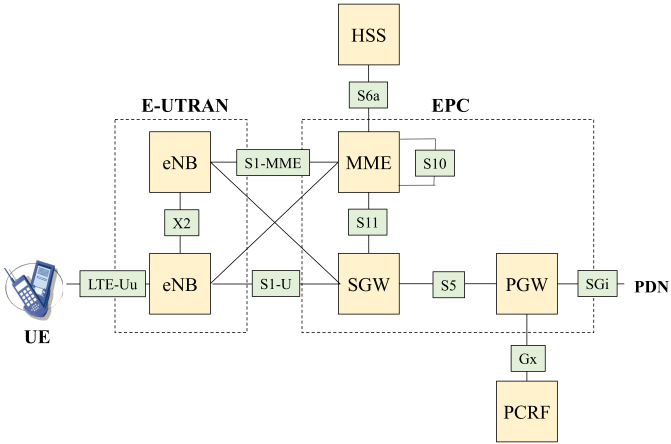1MBB Service – Network Architecture
1.1. Initial architecture
1.1.1. Functional architecture
The functional architecture of the EPS (Evolved Packet System) network is depicted in Figure 1.1, at the point when the mobile attaches to its home network.

Figure 1.1. Functional architecture of the EPS network
The EPS mobile network consists of an EPC (Evolved Packet Core) network and an evolved universal terrestrial radio access network (E-UTRAN).
The E-UTRAN ensures the connection of the user equipment (UE), the resource allocation for the radio interface and the resource reservation when the mobile is switched from one cell to another.
The EPC interconnects the access networks, provides the interface to the packet data network (PDN) and controls the attachment of mobiles, the authorization to access the service and the establishment of bearers.
1.1.1.1. eNB entity
The E-UTRAN includes a single type of entity, the evolved node base station (eNB), which connects to the mobiles.
The eNB entity is responsible for the management of radio resources, for the control of the establishment of the data radio bearer (DRB), in which the mobile traffic is transmitted, and for its mobility management during the session (handover) which consists of a transfer of the DRB to another eNB entity.
This entity transfers the traffic data from the mobile (respectively from the SGW (Serving Gateway) ...
Get LTE Advanced Pro now with the O’Reilly learning platform.
O’Reilly members experience books, live events, courses curated by job role, and more from O’Reilly and nearly 200 top publishers.

